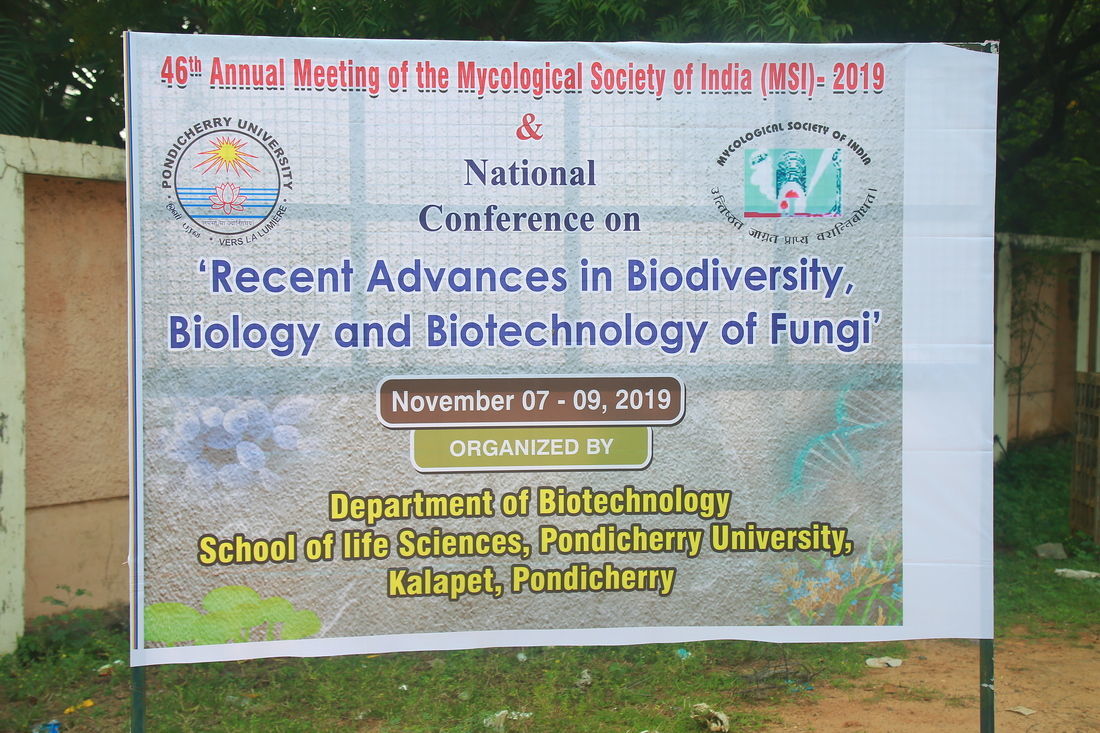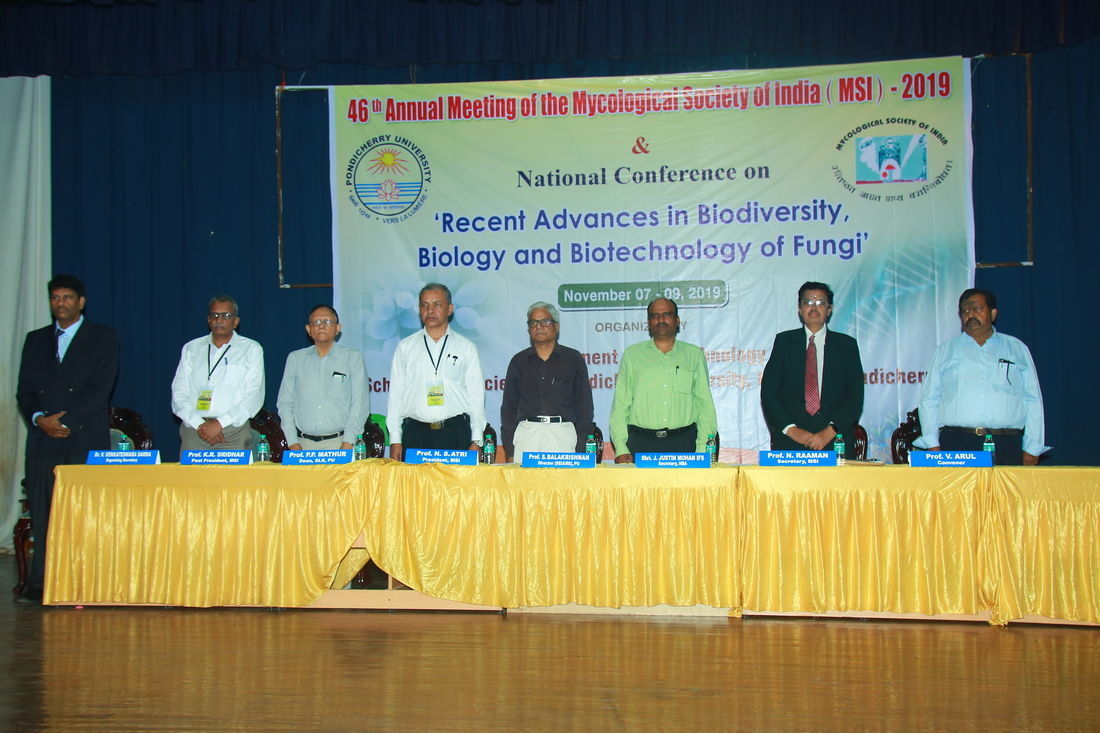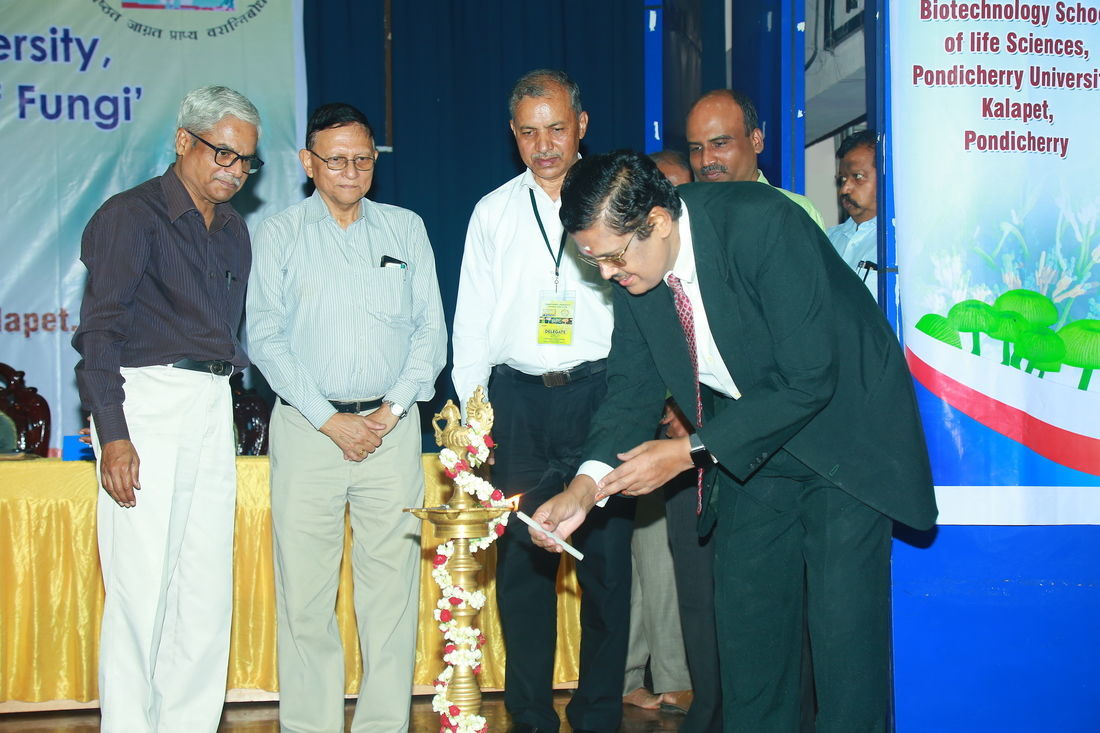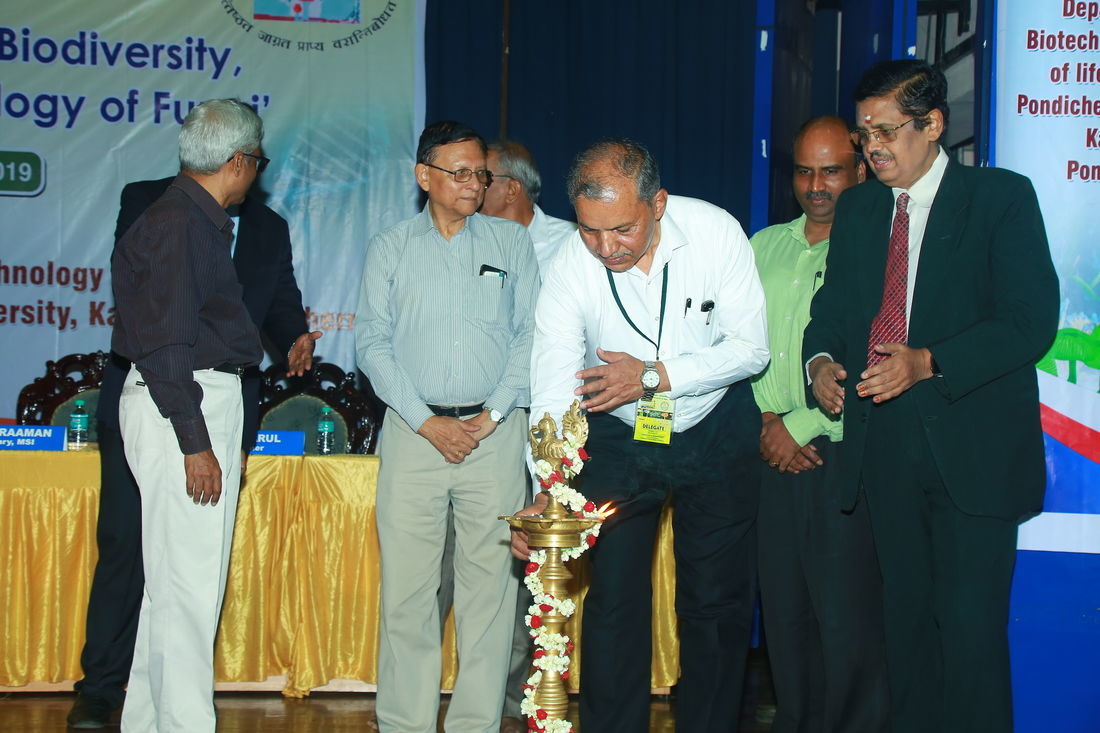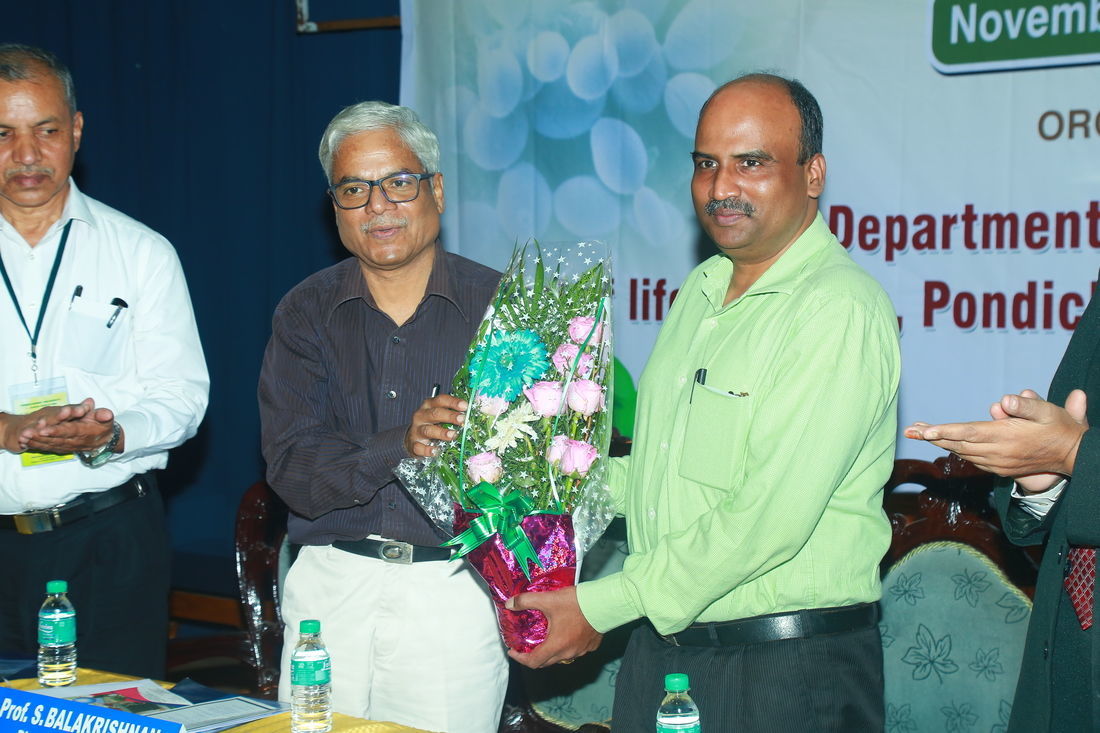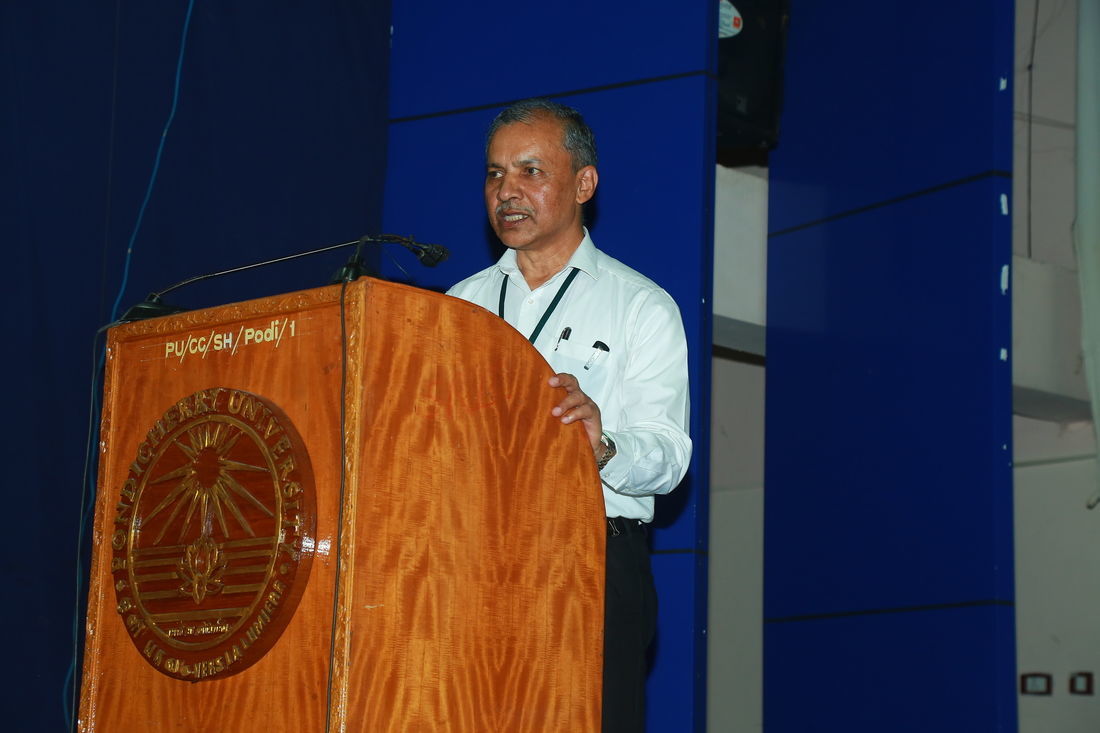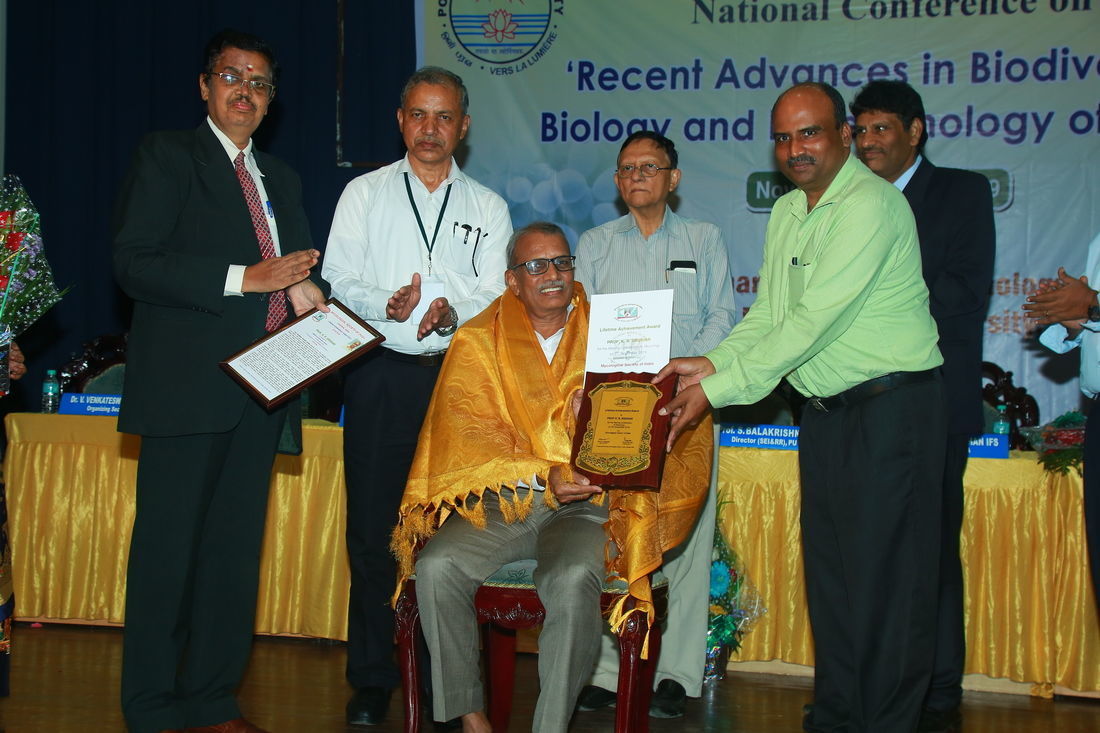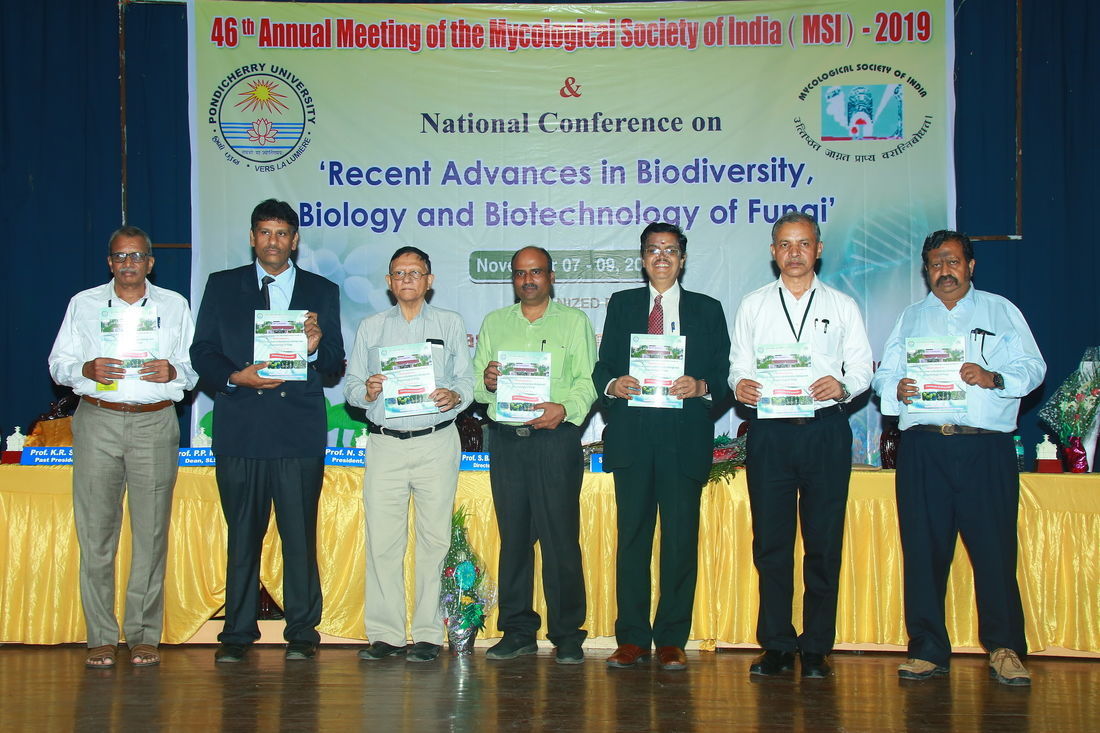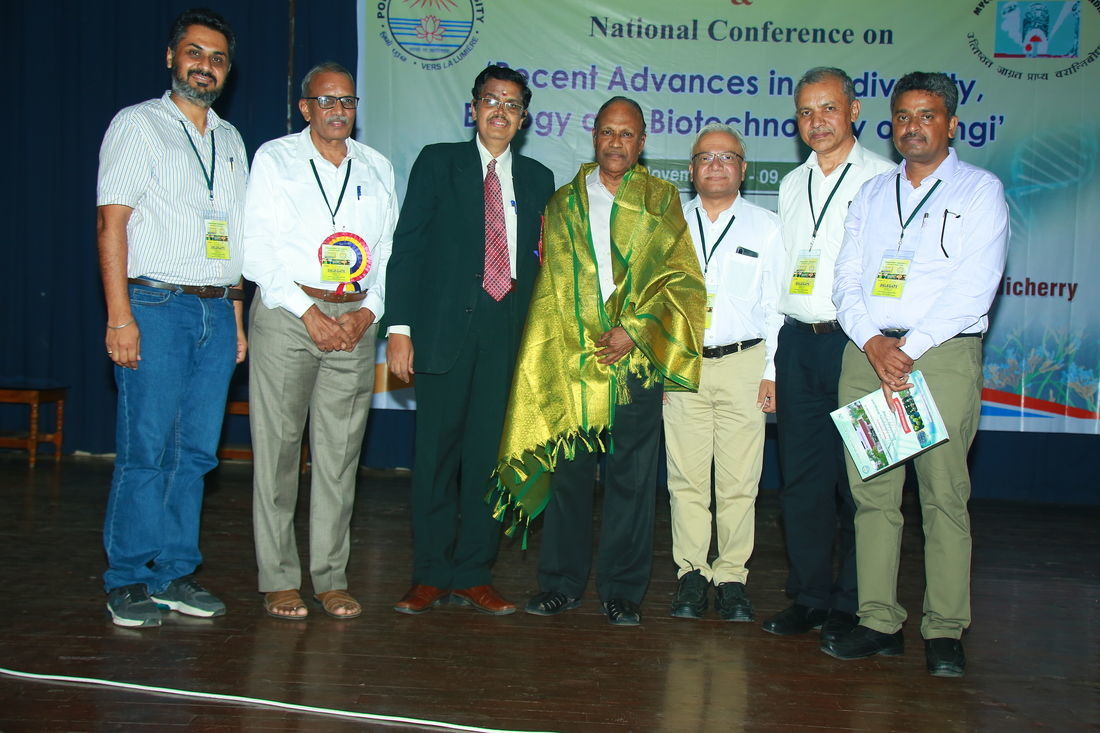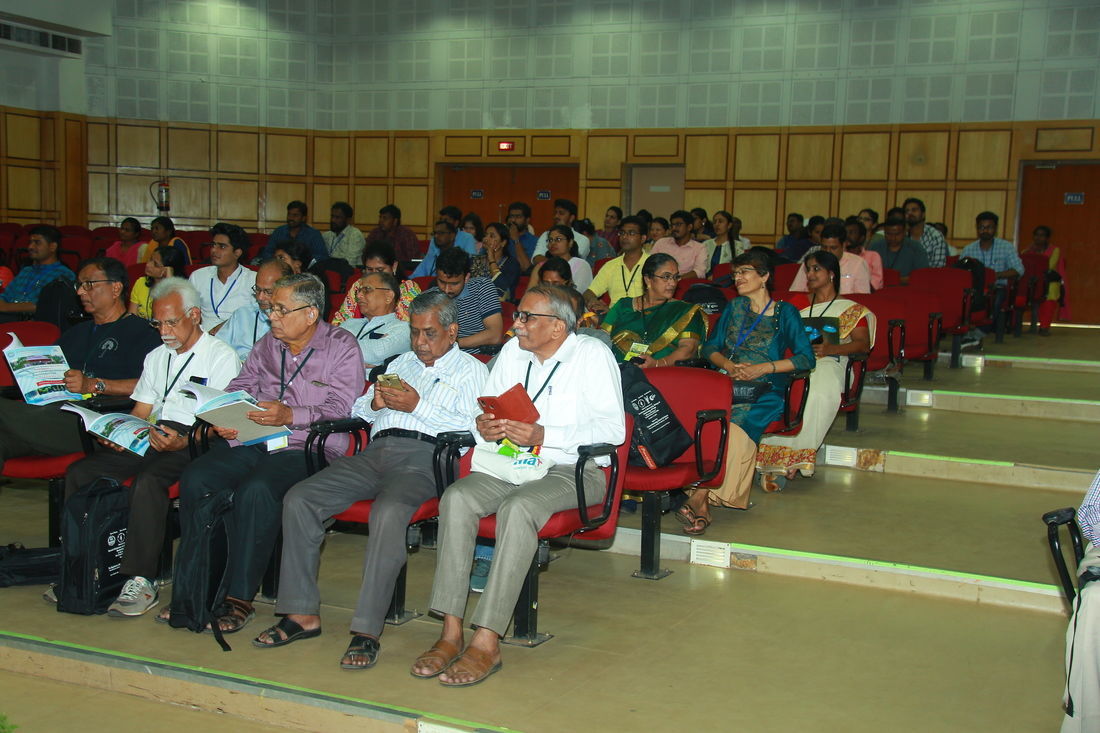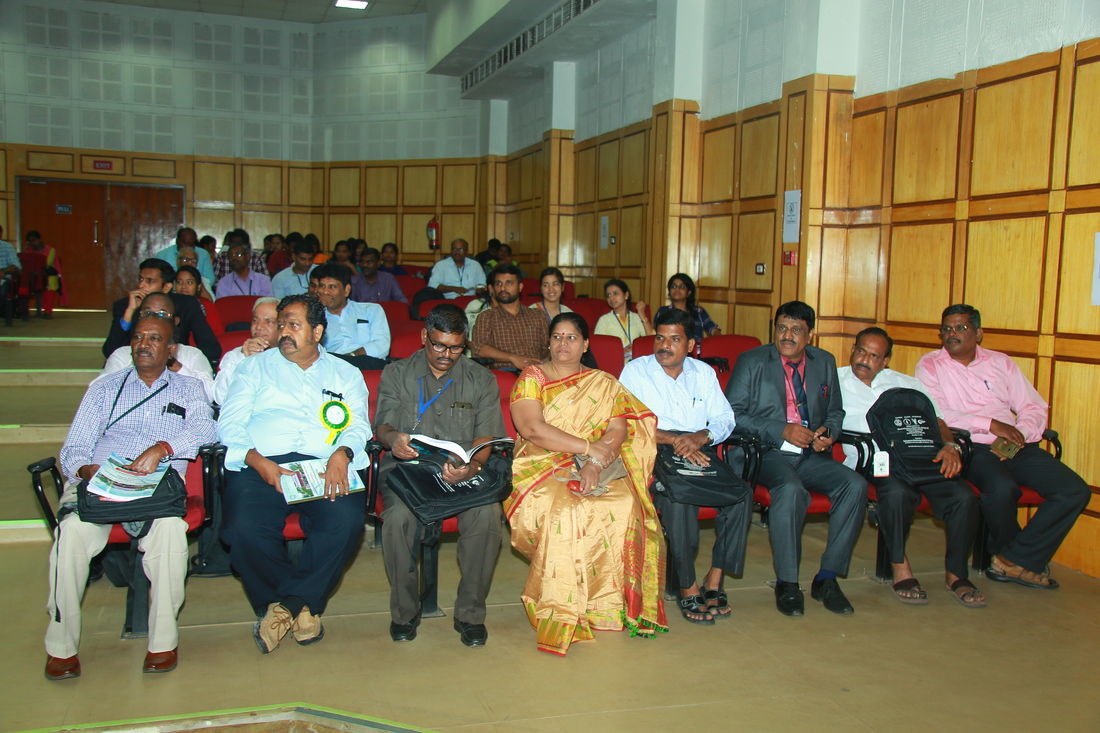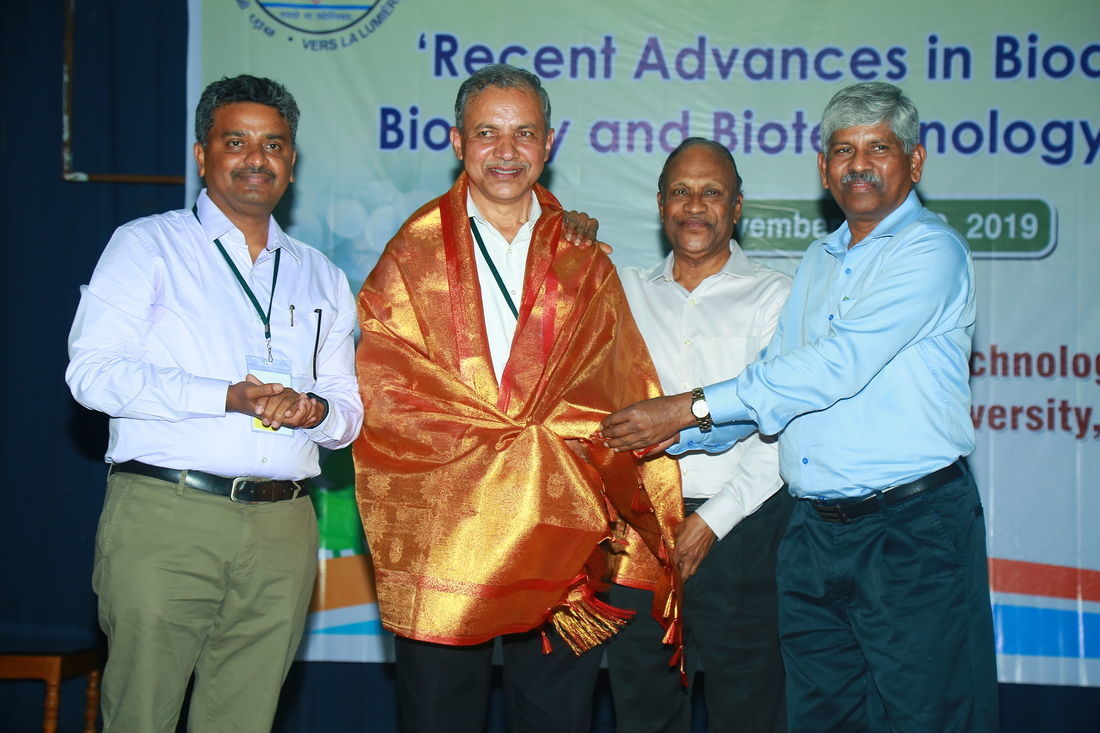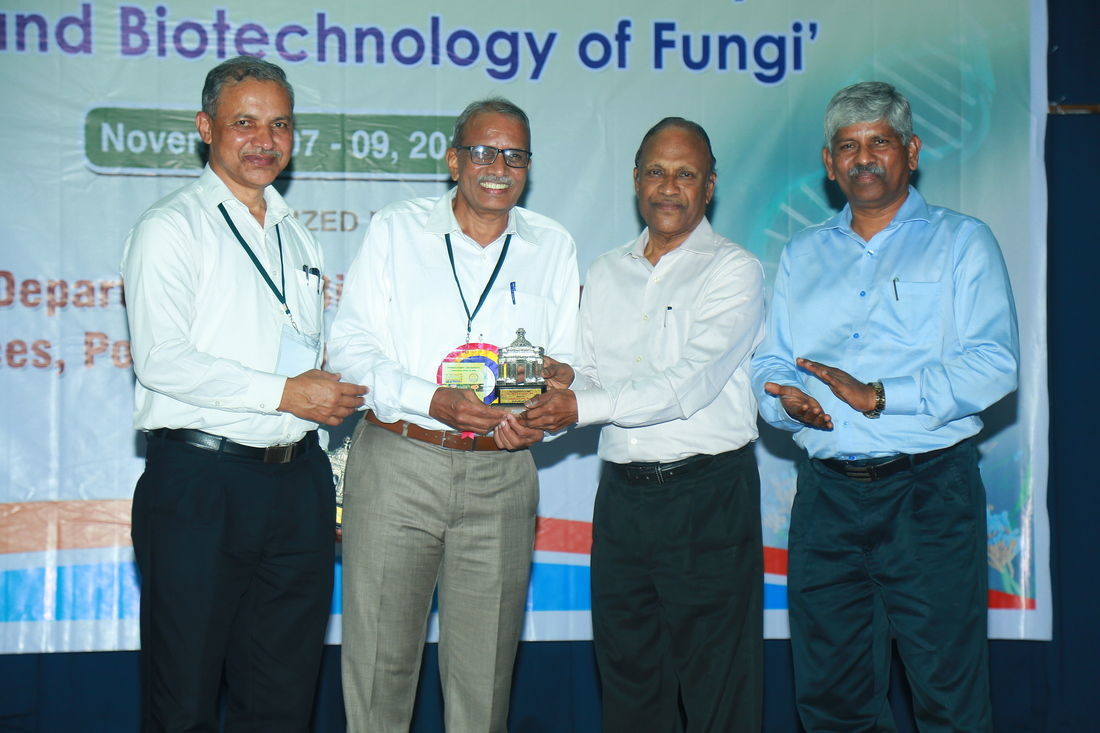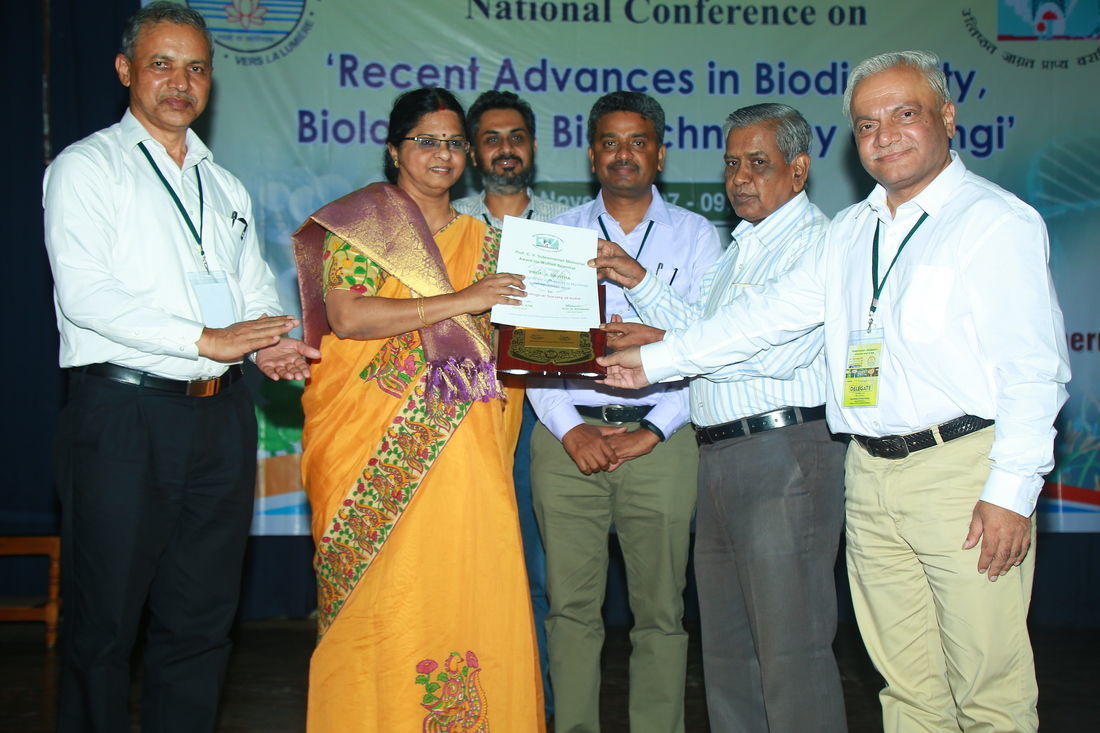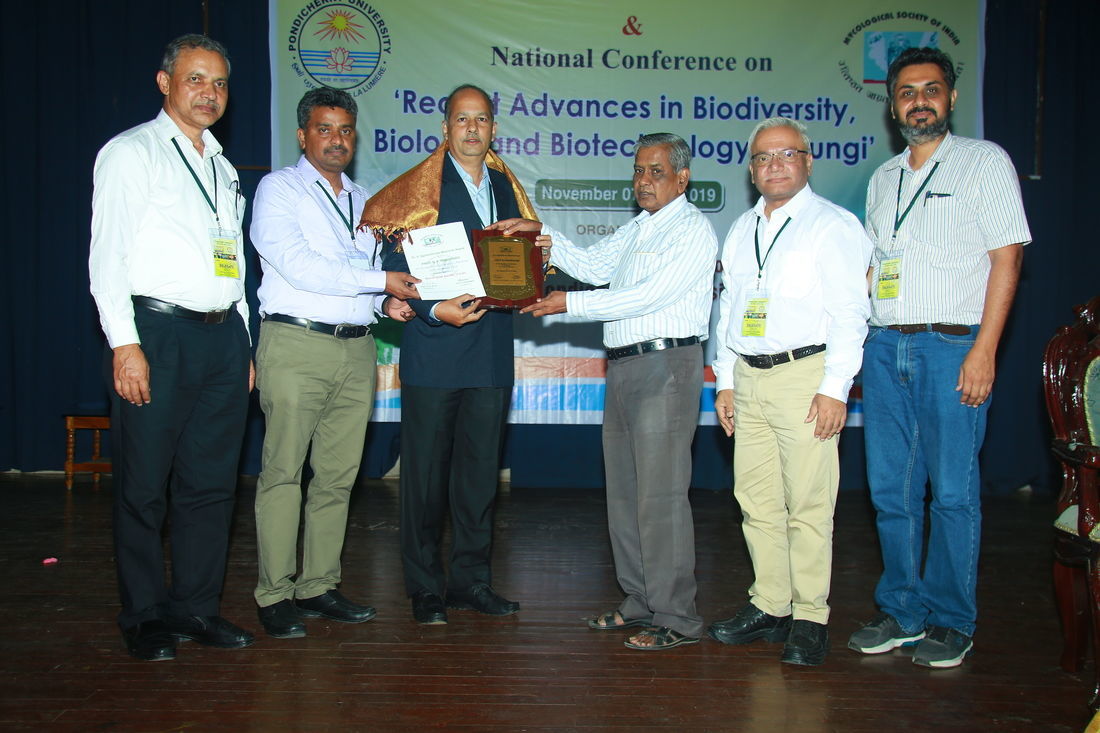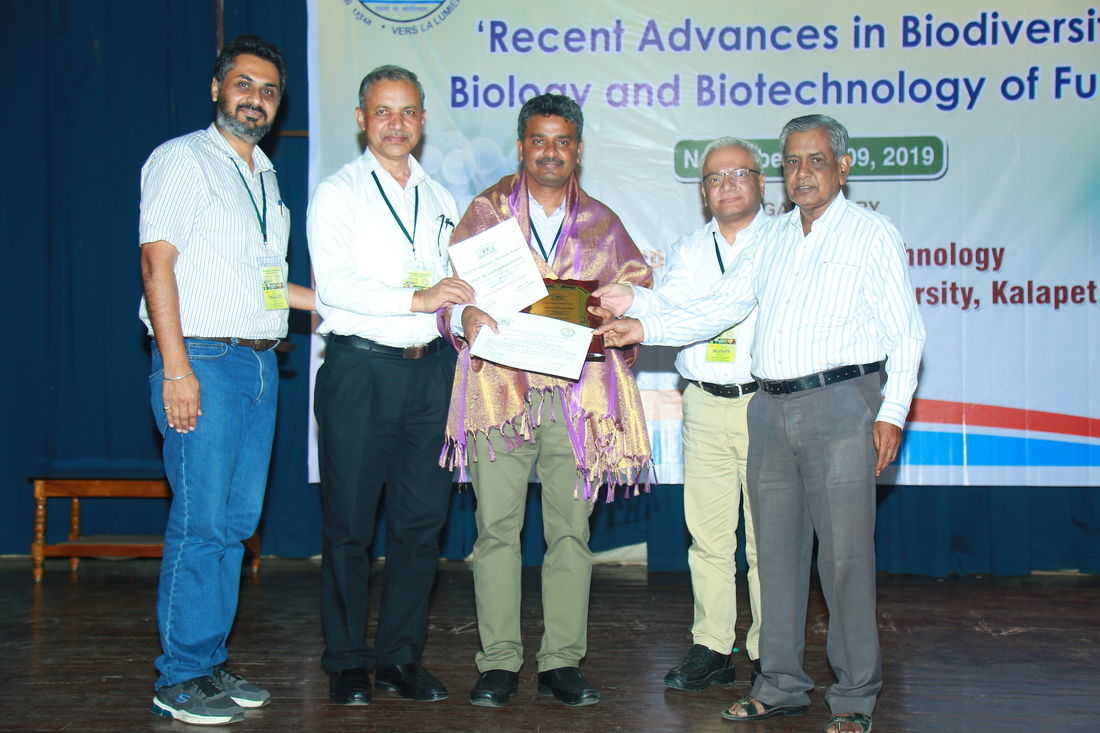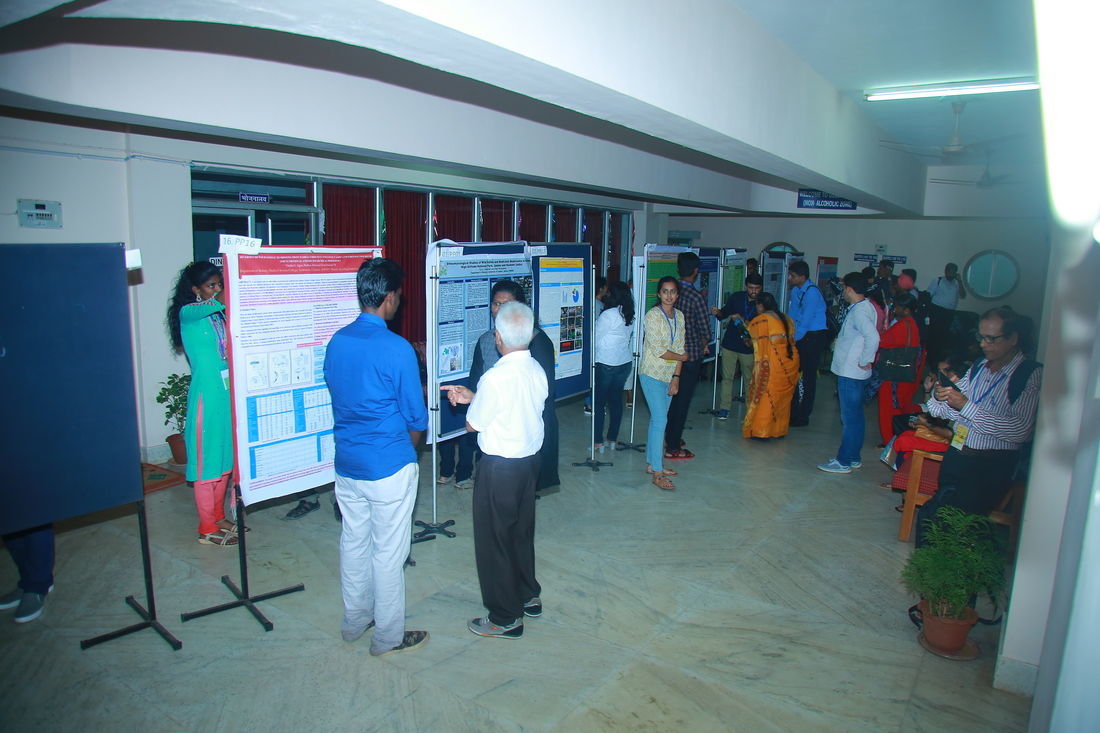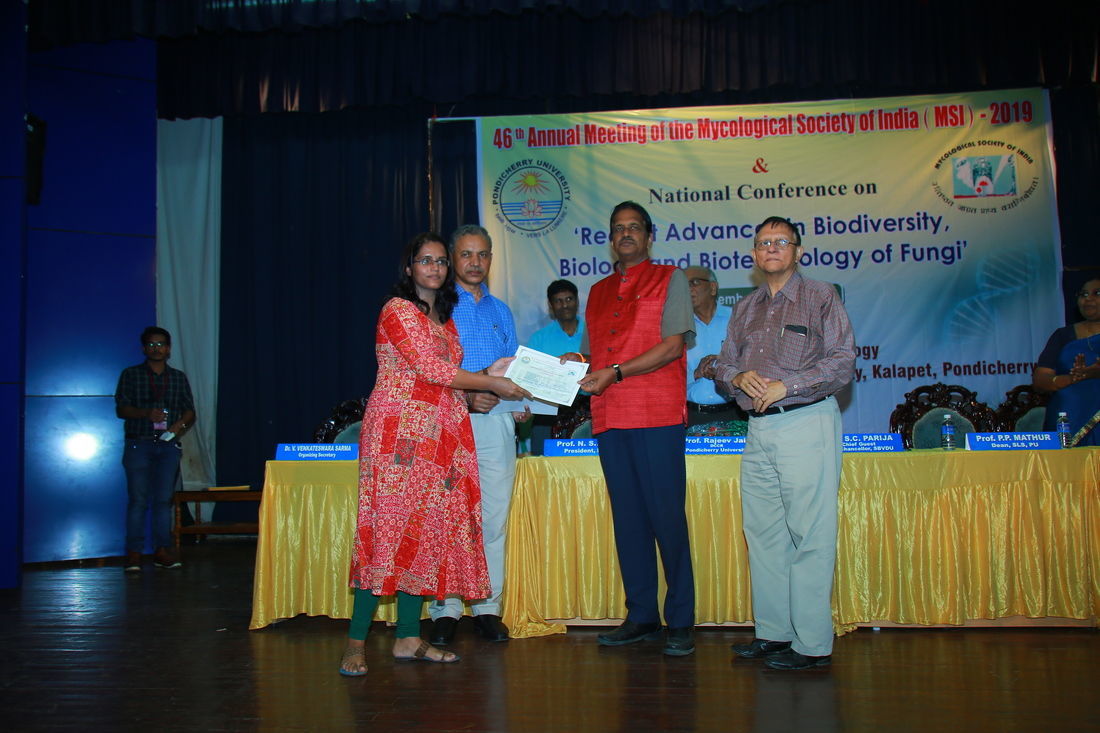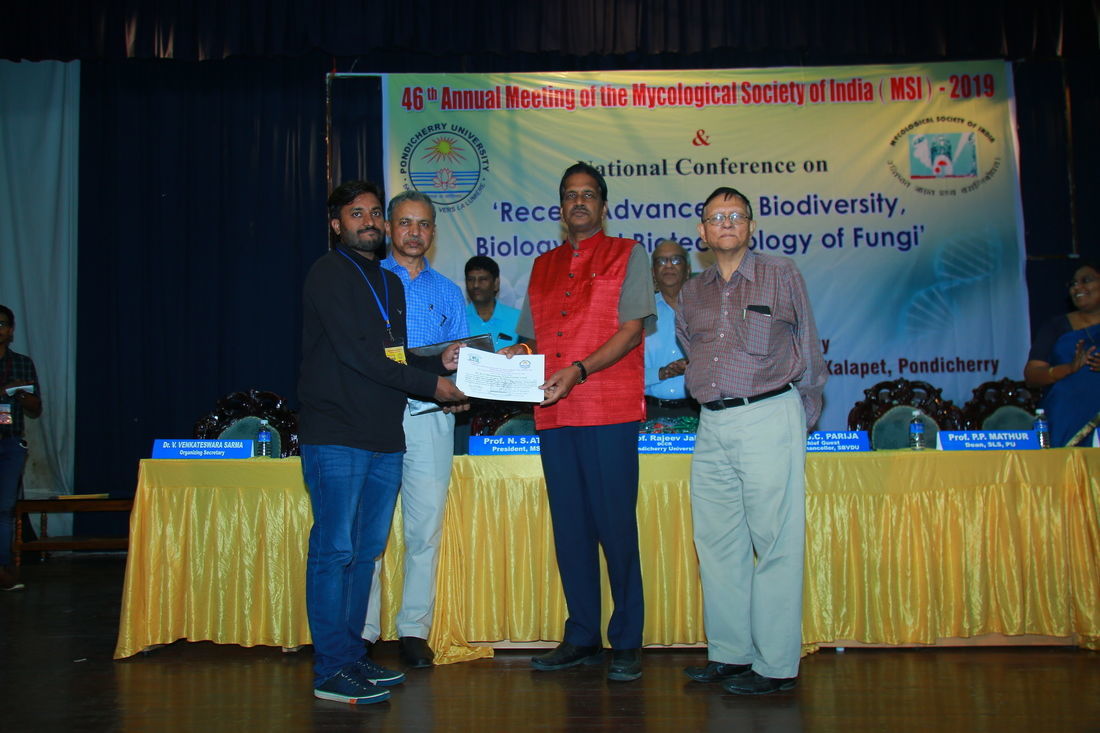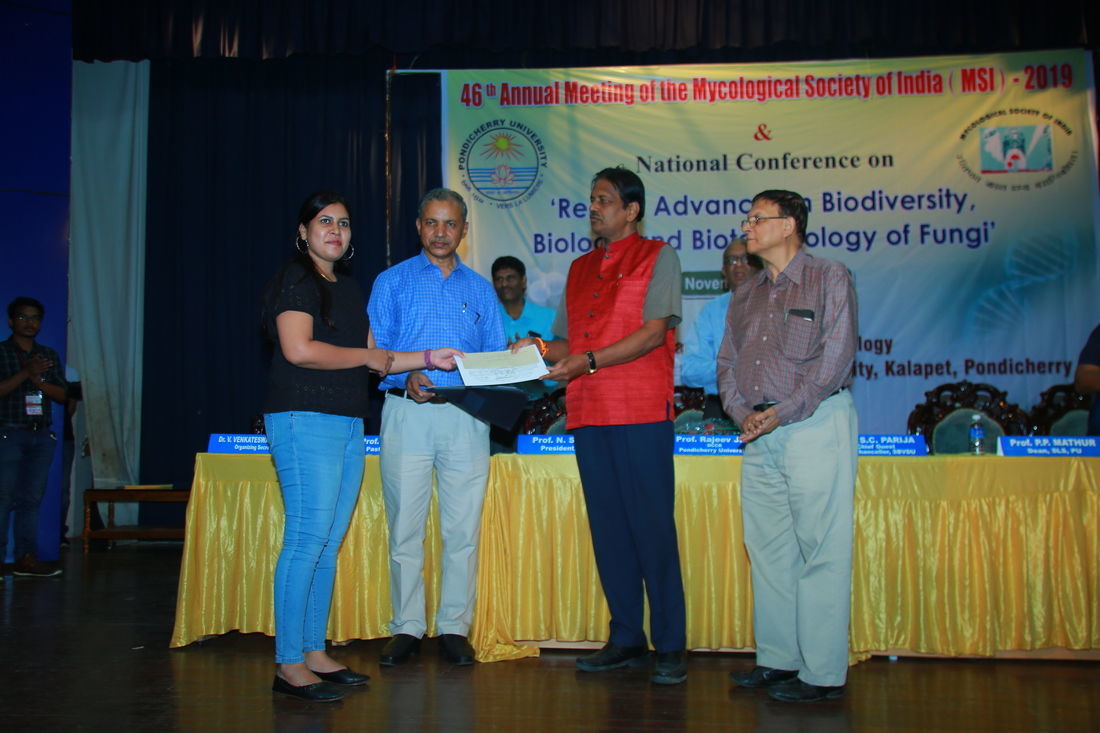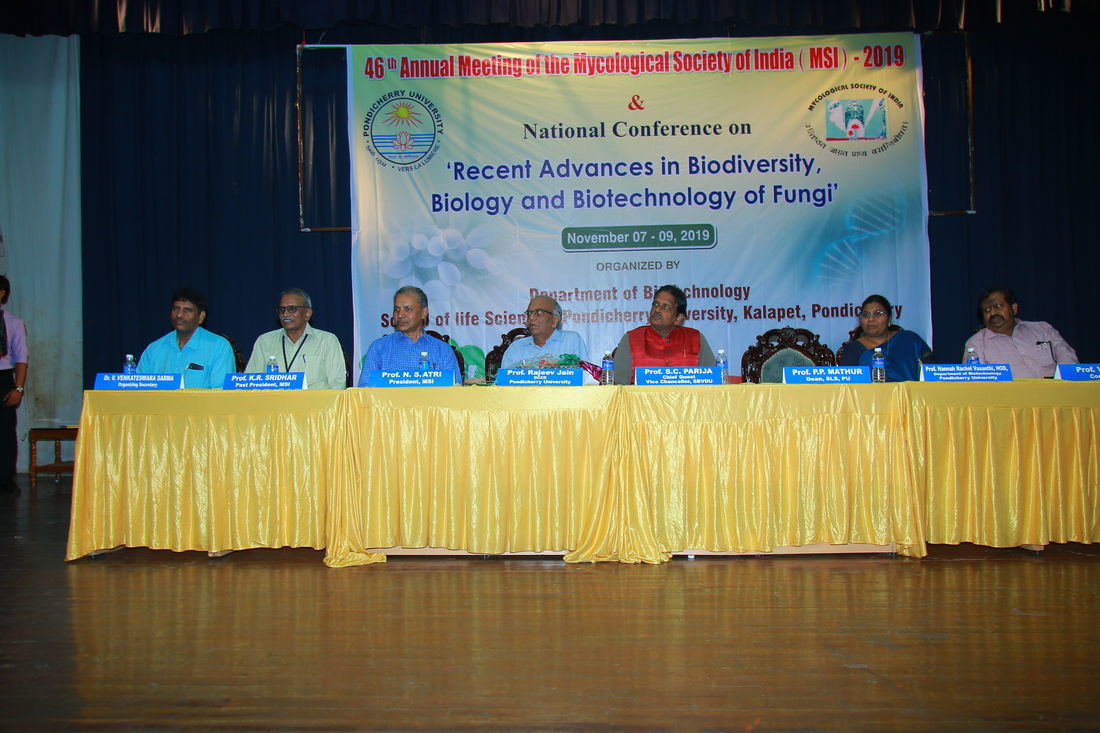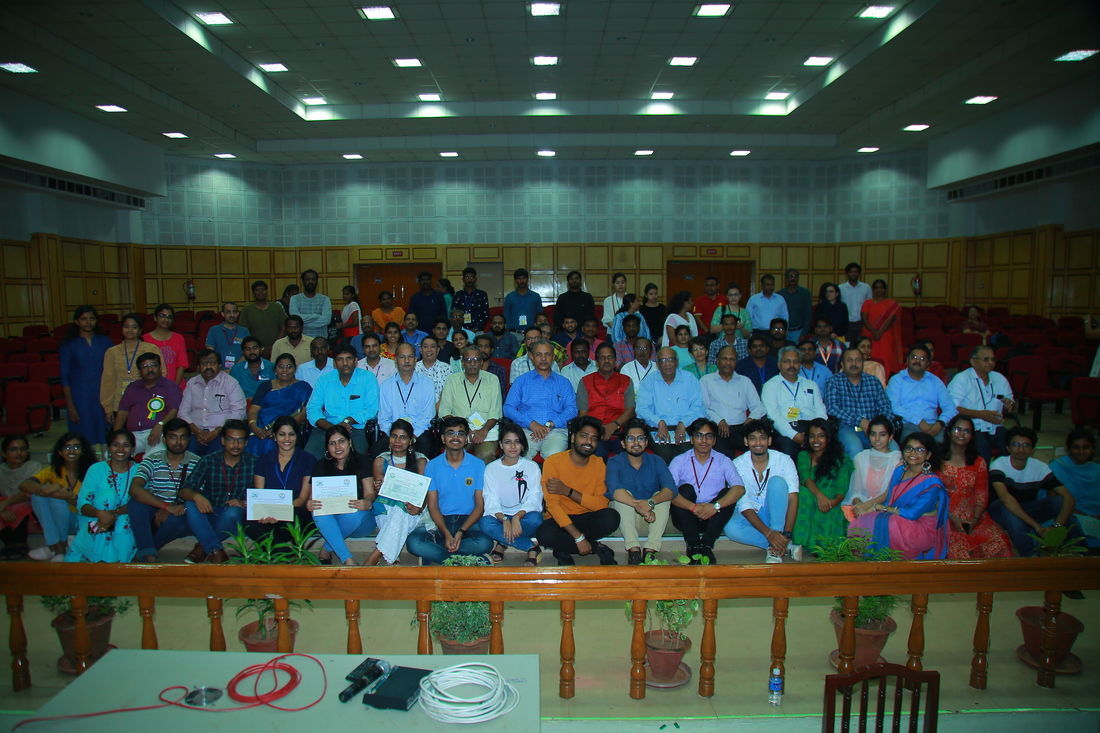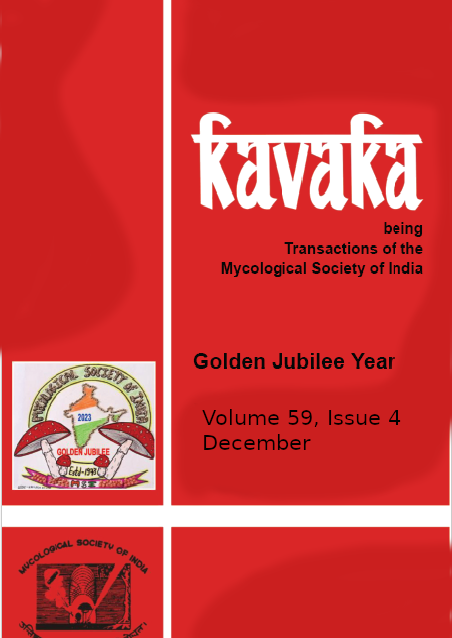From the Editor's Desk
After a brief sigh of relief from tumultuous 2020, as we stepped into the year 2021, people around the world and more particularly in India are once again grappling with the ferocity of the Covid-19 pandemic encompassing both rich and poor, all ranks and professions, classes, and nationalities. The fury of this ever-mutating RNA virus is still wreaking havoc with a spate of unprecedented and unforeseen events witnessed all across the country. In addition, mucormycosis, a rare but dangerous fungal infection of the sinuses, the brain and the lungs caused by the members of the Mucorales in diabetic or severely immunocompromised individuals have become life-threatening in severe and critically ill Covid-19 patients. Besides being known for diverse biological transformations, food and feed supplements, medicines, and neutraceuticals recently the negative side of this ubiquitous, predominantly saprobic soil and air-borne opportunistic group of fungi including Rhizopus arrhizus, Mucor circinelloides and lesser known Rhizomucor miehei, Syncephalastrum, Cunninghamella bertholletiae, Apophysomyces spp., Lichtheimia spp., and Saksenaea vasiformis has raised serious concern for the medical mycologists and practitioners. The challenge seems to have become bigger since the appearance of mucormycosis on the scene, if not controlled, can further, increase the susceptibility to the fatal pathogenic infections such as candidiasis, cryptococcosis, histoplasmosis, blastomycosis, and several other systemic human fungal mycoses. Therefore, the proper etiological diagnosis, epidemiology, and the susceptibility of humans, and availability of rapid and an effective therapy against varied mycoses are the main challenges confronting all of us.
While the pandemic had and is still having a huge impact on various aspects of human life, the bearing of it on the scientific community is huge. We have lost several great academicians, researchers, professionals and common man in this viral scourge. While their immense contributions to society at different levels will keep on inspiring and motivating the younger generation, our tributes and respectful homage to their departed souls and the eternal sacrifice they have made. With the adoption of the Covid-19 appropriate behaviour and rolling out and approval of multiple vaccines, there has been a ray of hope of a better world and global growth would likely rebound given the confluence of internal and external support factors. And now we are looking forward to positivity and hope that our hard work and resilience brighten the future of one and all.
As the Editor-in-Chief of Kavaka, I feel that several challenges confront us in maintaining the quality and global acceptability of Kavaka: a) reposing faith in the journal Kavaka by the scientific community; b) quality research article contributions keeping in view the global standards of manuscripts routed for publication in the Kavaka, especially the requirements and best practices for describing a new fungal species (Aime et al., 2021 in IMA Fungus) and allied data on their ecological and environmental significance; c) availability of active reviewers for critical evaluation following the recent research trends; and d) fostering cross-disciplinary collaborations. It seems rather easy to create a new taxon than searching the literature related to it. The challenge is not only publishing and advancing the high-impact quality science, but also maintaining its critical standards and global acceptance.
While there have been numerous challenges to navigate, yet we're proud that the scientific fraternity has very quickly responded and adapted to circumstances. The entire mycological fraternity of researchers, the authors, reviewers are thanked and acknowledged for their warrior-like role. Their continued involvement and consistency have set the ball of academics and research rolling.
I am deeply grateful to the members of the Mycological Society of India, in general, and the contributors (editorial board, authors, and reviewers) for their support, insights, and enthusiasm. Together, we make a wonderful team and I am excited to work with them in our shared mission of advancing mycology for the benefit of science and all of society. I sincerely acknowledge the unstinting support by Prof. N.S. Atri, formerly Editor-in-Chief Kavaka, for his constant help in meeting the challenge of timely publication of the present volume of Kavaka and Mr. Gulshan Pal Singh (Technical Assistant) is thanked for the computer setting of the manuscripts.
June 30, 2021
Yash Pal Sharma
(Editor in Chief KAVAKA)
Professor, Department of Botany, University of Jammu,
Jammu-180 006 (J&K) INDIA
![]()
KAVAKA 56: 1-7 (2021) DOI: 10.36460/Kavaka/56/2021/1-7
Arbuscular mycorrhiza in sustainable agriculture: Prospective and challenges
Rupam Kapoor
Department of Botany, University of Delhi, Delhi - 110007
Email : This email address is being protected from spambots. You need JavaScript enabled to view it.
At a time in which global food demand is exponentially increasing with concomitant shrinkage in the availability of farmable lands, microbes furnish a key role in sustainably optimizing agricultural processes. One such significant group of microbes that is extremely instrumental in sustainable agriculture is Arbuscular Mycorrhizal Fungi (AMF). This group of fungi thrives in soil and is crucial to the multitudinous biological functions of plants. My interest in Plant-AMF interactions would not have had the spirit it has without the inevitable support of my supervisor, Late Prof. K.G. Mukerji, whose wisdom, passion for science, and authoritative guidance have been immeasurably valuable in my growth as a person and blossoming scientific temperament in me over all these years. My greatest degree of appreciation goes out to him for exposing me to the realms of this promising group of beneficial fungi that serve as agro-ecosystem engineers by fostering crop growth, securing nutrients, and even fending off pests and pathogens. The natural benefits of these microbes are a powerful complement to existing plant and soil treatments. I place on record my sincere gratitude to the honorable members of the Mycological Society of India (MSI) for entrusting me and putting me at the forefront. I appreciate the very foundation and vision of MSI that has the endeavor to bring together the mycologists of the country and with the broad objective of promoting the growth of mycology in India with wider perspectives. It is with great pleasure and humility that I express my deep sense of gratitude for having been able to serve this society over the years and pledge to continue to do so to the best of my ability. We, as a society, can go long in cultivating the interest of young researchers in mycology and its application and in realizing the long chased vision of sustainable agriculture.
![]()
KAVAKA 56: 8-12 (2021) DOI: 10.36460/Kavaka/56/2021/8-12
Impact of various cultural parameters for extracellular pectinase production by some Fusarium oxysporum isolates in surface batch broth fermentation
Pinki Tikadar and Bejoysekhar Datta*
Mycology and Plant Pathology Research Laboratory, Department of Botany, University of Kalyani-741245, West Bengal, India.
*Corresponding author Email : This email address is being protected from spambots. You need JavaScript enabled to view it.
(Submitted onApril 13, 2021; Accepted on May 19, 2021)
ABSTRACT
Pectinase has tremendous industrial application. Filamentous fungi such as Fusarium oxysporum might be exploited as a commercial source of pectinase. Three F. oxysporum isolates from rhizosphere of grass pea (Lathyrus sativus L.), tomato (Solanum lycopersicum L.) and potato (Solanum tuberosum L.) were used in the study. They showed transparent zone around their colony on pectin agar plate. Crude enzyme was prepared by growing them in pectin broth and various culture parameters were optimized for maximum production of pectinase. All the three isolates showed highest pectinase production after 6th day of incubation at 30°C in the medium having pH range 5.5 - 6.5 and supplemented with 0.5% pectin. Among the nine culture media studied, maximum activity was observed in Czapek's Dox broth (3.37, 3.83 and 2.96 U/ml), moderate activity in malt extract broth and least activity was observed in Asthana and Hawker's broth. In the CDB medium when sucrose was replaced with other carbon sources, maximum activity was obtained in presence of pectin followed by dextrose and least activity in mannitol. Among nitrogen sources, amino acids such as glycine and glutamine supported maximum production of pectinase in tomato and potato isolates and peptone in grass pea isolate. Thus, the isolates could be treated as effective producer of pectinase enzymes with various biotechnological applications.
Keywords: Incubation time, temperature, pH, nutritional supplement
![]()
KAVAKA 56: 13-21 (2021) DOI: 10.36460/Kavaka/56/2021/13-21
Appraisal of native AM fungi in improving the plant productivity, soil health and sequestering soil carbon in agroecosystems
Mahaveer P. Sharma
ICAR-Indian Institute of Soybean Research, Khandwa Road, Indore -452001
*Corresponding author Email: This email address is being protected from spambots. You need JavaScript enabled to view it.
(Submitted on May 14, 2021; Accepted on June 10, 2021)
ABSTRACT
The soils under tropical and sub-tropical regions are generally nutrient deficient, marginally fertile and growers rely on sub-optimal yields. Among the soil biota, the role of arbuscular mycorrhizal (AM) fungi in sustainable agriculture have been widely recognized. AM inoculation in horticultural and crop plants in the field and during the hardening stage has been shown to improve the plant stand, plant health, saved chemical fertilizer inputs. The crop productivity further improved when AMF is applied with PGPR. AM fungi also improving soil through production of glomalin which contributes to the soil carbon pool. Based on stabilized field studies, the functioning of nativeAMF enhances crop productivity and soil carbon sequestration under organic and conservation tillage with maize-based crop sequences. These fungi can be produced routinely on host plants in potting substrates, on-farm, and using Ri-plasmid hairy roots under in vitro. Besides employing the conventional microscopic methods (spore density and root colonization), its functioning can be carried out through biochemical methods such as AM-signature 16:1ω5 phospholipid and neutral fatty acids, and glomalin. The production of AM fungi, its quality assurance, and its application in the field for nutrient mobilization and carbon mitigation should be popularized through large-scale field demonstrations at multiple locations.
Keywords: AM signature fatty acids, crop production, farming practices, glomalin, soil carbon sequestration
![]()
KAVAKA 56: 22-28 (2021) DOI: 10.36460/Kavaka/56/2021/22-28
Opportunistic yeasts causing onychomycosis among some elderly residents of Rajouri district, J&K (India)
Anjali Sharma and Geeta Sumbali*
Department of Botany, University of Jammu, BR Ambedkar Road Jammu-180006 (India)
*Corresponding author Email : This email address is being protected from spambots. You need JavaScript enabled to view it.
(Submitted on December 23, 2020; Accepted on April 13, 2021)
ABSTRACT
Onychomycosis is the fungal infection of toenails and fingernails, which can be caused by dermatophytes, non-dermatophytic filamentous fungi and yeasts. Among these, yeasts are a group of fungi widely distributed in nature and can be found in the soil, air, water, food, etc. In human beings, they are occasionally a part of the normal microbiota of gastrointestinal tract, respiratory tract, reproductive tract and skin. However, these can cause superficial as well as systemic infections when a person is immunocompetent or his/her normal flora gets altered. In the last few decades, yeasts are emerging as the common etiological agents of onychomycosis. During a survey conducted for the first time in Rajouri district (Union Territory of Jammu and Kashmir), toenails and fingernails of the elderly residents were visually scanned for dystrophies and sampled for knowing the etiologic agents. Investigations revealed the presence of three yeast species viz., Candida albicans, Trichosporon asahii and Rhodotorula mucilaginosa associated with the dystrophied nails of some of the residents.
Keywords: Onychomycosis, Candida albicans, Trichosporon asahii, Rhodotorula mucilaginosa
![]()
KAVAKA 56: 29-35 (2021) DOI: 10.36460/Kavaka/56/2021/29-35
Preliminary studies on the domestication of an indigenous strain of Pleurotus cystidiosus collected from the living stem of Lagerstroemia speciosa
Amita1*, R.C. Upadhyay2, M.K. Saini1 and N.S. Atri1&3
1Department of Botany, Punjabi University, Patiala-147002, Punjab, India.
2Prerna Shikhar Apartment, Near Bodakdev Fire Station, Ahmedabad-380054, Gujarat, India.
3Presentaddress: Attri’s Paradise, Officer’s Colony, J. B. T. Road, Kotla Nala, Solan-173212, Himachal Pradesh, India
*Corresponding author Email: This email address is being protected from spambots. You need JavaScript enabled to view it.
(Submitted on March 16, 2021; Accepted on May 06, 2021)
ABSTRACT
Oyster mushrooms (Pleurotus spp.) are popular throughout the world because of their tremendous stability of pileus and stipe, cooking qualities, and longer shelf life. During the present investigations pure culture of P. cystidiosus O.K. Mill. was raised through standard tissue culture technique from the fresh young sporophore collected from nature. Subsequently, its spawn was prepared on supplemented wheat grains with different additives and thereafter three locally available lignocellulosic substrates (wheat straw, paddy straw, and sawdust) were used for its cultivation. Among the three substrates used, maximum biological efficiency of 36% was obtained when the mushroom was grown on wheat straw followed by paddy straw (6.3%) and sawdust (2.3%). To enhance the yield of mushroom, wheat straw was further supplemented with rice bran (10%): corn flour (5%), mustard oil seed cake (10%): corn flour (5%), cotton oil seed cake (10%): corn flour (5%) and a mixture of all these four (3:1:1:1) and corn flour (5%). Wheat straw supplemented with rice bran (RB) + mustard oil seed cake (MSC) + cotton oil seed cake (CSC) in the ratio of 3:1:1:1 gave maximum biological efficiency (B.E. 74%) followed by supplementation of wheat straw with rice bran (B.E. 55.15%), mustard oil seed cake (B.E. 50.42 %) and cotton oil seed cake (B.E. 48.58%).
Keywords: Coremiopleurotus, lingo-cellulosic substrate, cultivation, sporophores, biological efficiency.
![]()
KAVAKA 56: 36-43 (2021) DOI: 10.36460/Kavaka/56/2021/36-43
Understanding the role of some novel components in modulating virulence of necrotrophic fungus
Botrytis cinerea
Rupam Kapoor
Department of Botany, University of Delhi, Delhi - 110007
Corresponding author Email : This email address is being protected from spambots. You need JavaScript enabled to view it.
(Submitted on March 24, 2021; Accepted on May 8, 2021)
ABSTRACT
Botrytis cinerea is the second most destructive necrotrophic phytopathogen affecting over 500 plant hosts, including several commercially valuable crop species. The infection is characterized by the presence of grey-colored mold on pre as well as post-harvest fruits and vegetables. It is a highly efficacious pathogen due to its broad host range, adaptable infection styles, and high reproductive potential. The application of fungicides is not effective in managing the disease as the pathogen rapidly develops resistance to it. Huge commercial losses and unavailability of suitable measures make it imperative to intensely comprehend the molecular mechanism of pathogenicity in B. cinerea. The availability of a complete errorless genome and advancement of molecular tools for genetic study has proven fundamental in elucidating the infection techniques of the pathogen. The review synopsizes the role of some novel components identified by mutational analysis that influenced the virulence of B. cinerea.
Keywords: Botrytis cinerea, phytopathogen, virulence potential, mutant and molecular mechanism.
![]()
KAVAKA 56: 44-46 (2021) DOI: 10.36460/Kavaka/56/2021/44-46
Clavariadelphus pakistanicus (Gomphales): A new macrofungal record from India
Uzma Altaf, S.A.J. Hashmi and Yash Pal Sharma*
Department of Botany, University of Jammu, Jammu, Jammu and Kashmir, India.
*Corresponding author Email : This email address is being protected from spambots. You need JavaScript enabled to view it.
(Submitted on March 27,2021; Accepted on May 24,2021)
ABSTRACT
Clavariadelphus pakistanicus is described for the first time from India based on morphological and molecular (ITS) data from Jammu and Kashmir. Complete morphological descriptions, photographs and comparisons with related species is provided and a key to the Indian species of Clavariadelphus is also provided.
Keywords: Abies pindrow, Clavariadelphaceae, Coniferous, Jammu and Kashmir, ITS
![]()
KAVAKA 56: 47-64 (2021) DOI: 10.36460/Kavaka/56/2021/47-64
Human infections caused by plant pathogen fungi: an overview
Harish C. Gugnani1*, Saroj Mishra2 and Rajinder Singh Sandhu3
1Department of Microbiology, V.P. Chest Institute (VPCI, University of Delhi, India
Present Address: J 3/45, Rajouri Garden, New Delhi-110027, India
2Department of Microbiology, University of Houston, Houston (TX), USA,
3Department of Biology, Guru Nanak Dev University, Amritsar-143005, India
*Corresponding author Email: This email address is being protected from spambots. You need JavaScript enabled to view it.
(Submitted on December 26, 2020; Accepted on May 28, 2021)
ABSTRACT
Plant pathogenic fungi causing human infections belong to several groups, viz., Hyalohyphomycetes and Phaeohyphomycetes, both of them including several orders and families of fungi in the phyla of Deuteromycota (Fungi Imperfecti), Ascomycota, and Basidiomycota. Important genera containing human pathogenic fungal species include Fusarium, Phialemonium, Phaeoacremonium, Curvularia, Alternaria Cladosporium, Macrophoma, and Pseudozyma. While the genus Exerohilum is the only important one in the Ascomycota, Schizophyllum represents Basidiomycota the same way. During the past six decades, numerous cases of human infections caused by plant pathogenic fungi have been described from several countries on all the continents and several reviews of human infections caused by these specific groups of plant pathogens have been published. The number of plant pathogenic species infecting humans continues to grow, most of them being of opportunistic behaviour. Socio-economic, geo-ecological characteristics and the increasing number of populations at risk are the main determinants of variations on the incidence and prevalence of fungal diseases around the world, including diseases caused by plant pathogens. The aim of this study is to present an overview of human infections caused by some selected plant pathogenic fungi representing different taxonomic groups.
Keywords: Human infections, plant pathogenic fungi, India, other countries, update
![]()
KAVAKA 56: 65-68 (2021) DOI: 10.36460/Kavaka/56/2021/65-68
Some new records of lichens from the Goodrical Reserve Forest, Pathanamthitta district of Kerala
Diana Purushothaman1*, Sanjeeva Nayaka2 and Jasy Thomas3
1&3Department of Botany, St Thomas college, Kozhencherry-689641, Kerala, India.
2CSIR - National Botanical Research Institute, Rana Pratap Marg, Lucknow- 226001, Uttar Pradesh, India
*Corresponding author Email : This email address is being protected from spambots. You need JavaScript enabled to view it.
(Submitted on April 27, 2021; Accepted on May 29, 2021)
ABSTRACT
The exploration of lichens carried out in the Goodrical Reserve Forest of Pathanamthitta, Kerala resulted in 43 species with dominance of crustose forms. Graphis japonica, Lepraria indica, Myelochroa metarevoluta, Porina belonospora and Pseudocyhellaria junghuhniana are new records to Kerala. A brief description of the new records is provided.
Keywords: Lichenized fungi, Western Ghats, biodiversity, mycobiota, southern India
![]()
KAVAKA 56: 69-74 (2021) DOI: 10.36460/Kavaka/56/2021/69-74
Some hyphomycetous fungi fromAndhra Pradesh and Telangana, India
C. Manoharachary*¹ and D. Nagaraju²
¹Mycology and Molecular Plant Pathology Laboratory, Department of Botany, Osmania University, Hyderabad 500 007,Telangana, India.
²Department of Botany, Govt. City College (A), Hyderabad, Telangana, India
*Corresponding author Email: This email address is being protected from spambots. You need JavaScript enabled to view it.
(Submitted on March 28, 2021; Accepted on May 26, 2021)
ABSTRACT
In the present investigation, dry deciduous scrub and mixed forests, Eastern Ghats, and other regions of Telangana and Andhra were surveyed for hyphomycetous fungi during 2010-2020. Out of 105 fungi identified, Aspergillus was represented by 11 species, followed by Penicillium with 10 species, Curvularia 5 species, Periconia with 4 species, Stachybotrys having 3 species and all other genera were represented by 1 to 3 species. Out of 105 fungi reported, only 32 species were new additions to the fungi of Andhra Pradesh and Telangana. Interestingly, the forest localities of Bhadrachalam, Yellendu, and Khammam along with Hyderabad harbored more fungal species than others. It is concluded that there is a hidden wealth of fungi in Andhra Pradesh and Telangana forest localities that need in-depth study.
Keywords : Andhra Pradesh, fungal diversity, hyphomycetous, forest habitats, Telangana.
![]()
KAVAKA 56: 75-84 (2021) DOI: 10.36460/Kavaka/56/2021/75-84
Seasonal distribution and biopotential of endophytic fungi recovered from photosynthetic root of
Tinospora cordifolia
Ashish Mishra1, Anuj Kumar2, Surendra K. Gond1, Satish K. Verma1, Jitendra Kumar1, Dheeraj K. Singh3 and R.N. Kharwar1*
1Mycopathology and Microbial Technology Laboratory, CAS in Botany, Institute of Science, Banaras Hindu University, Varanasi-221005, India
2Department of Botany, Budhha Post Graduate College, Kushinagar, India
3Department of Botany, Harish Chandra Post Graduate College, Varanasi, India
*Corresponding author Email : This email address is being protected from spambots. You need JavaScript enabled to view it.
(Submitted onApril 30, 2021; Accepted on June 10, 2021)
ABSTRACT
A total of 263 endophytic isolates were recovered from 1800 segments plotted in three different seasons (winter, summer, and monsoon) at three different locations (BHU, Ramnagar, and Maruadih) representing the 20 different fungal taxa. The colonization frequency was maximal during monsoon (20.5%) followed by winter (13.83%) and minimal during summer (9.5%). However, among sites, it was maximum at location 3 (Ramnagar) (18.66%) followed by location 1(BHU) (17.16%) and location 2 (Maruadih) (8.0%). A maximum CF of 1.5% was observed for Cladosporium cladosporioides followed by Alternaria alternata and Colletotrichum gloeosporioides 1.27%, Nigrospora oryzae 1.22% and Phomopsis tersa 1.1% while Aspergillus tubingensis followed by Fusarium brachygibbosum were recovered as a rare taxon with 0.16% and 0.22% colonization frequency, respectively. The MANOVA and Jaccard's distance (Jc) clearly indicate that the effect of season was more pronounced than the location in respect to species diversity. Out of total endophytic fungi isolated, 50% of them were active against at least either one or more human pathogenic bacteria tested. Among all active isolates, Pseudofusicoccum adansoniae exhibited an impressive antibacterial activity against all pathogenic bacteria. Eleven endophytic fungi (55.00 %) were found to be active against one or more fungal pathogens. Many endophytic fungi exhibited the production of amylase, cellulase, lipase, pectinase, protease, and xylanase. Out of 20 endophytic fungi, 20% were found to show antioxidant activity, 45% of endophytic isolates exhibited siderophore production while none of the fungi was found to solubilize phosphate in solid agar medium
Keywords: Antimicrobial activity, endophytes diversity, colonization frequency, enzyme activity, siderophores
![]()
KAVAKA 56: 85-88 (2021) DOI: 10.36460/Kavaka/56/2021/85-88
Four new records of family Botryobasidiaceae from Jammu Division (Jammu and Kashmir)
Jyoti Sharma,Avneet Pal Singh* and G. S. Dhingra
Department of Botany, Punjabi University, Patiala 147002, Punjab, India
*Corresponding author Email : This email address is being protected from spambots. You need JavaScript enabled to view it.
(Submitted onApril 19, 2021; Accepted on June 03, 2021)
ABSTRACT
Four corticioid species viz., Botryobasidium robustius, B. subcoronatum, B. vagum and Botryohypochnus isabellinus, of the family Botryobasidiaceae are described and illustrated. All these are new reports for the Jammu division (J&K). Among these, Botryobasidium robustius is a new record for India and B. vagum is new for Union Territory of Jammu and Kashmir.
Keywords: Basidiomycota, Agaricomycetes, Corticioid fungi.
![]()
KAVAKA 56: 89-91 (2021) DOI: 10.36460/Kavaka/56/2021/89-91
Symptomatological studies on almond scab caused by Cladosporium carpophilum in Kashmir, India
Nassreen F. Kacho1*, Mushtaq A. Bhat2, Mohd Hussain3, Sabiha Ashraf2 and Saba Banday3
1KVK Kargil-I, Sher-e-Kashmir University of Agricultural Sciences & Technology of Kashmir, Kargil, Jammu and Kashmir, India
2Division of Plant Pathology, Sher-e-Kashmir University of Agricultural Sciences and Technology of Kashmir, Shalimar Campus, Srinagar 191 121, Jammu & Kashmir, India
3Department of Zoology, Taru-Campus University of Ladakh, UT-Ladakh
*Corresponding author Email : This email address is being protected from spambots. You need JavaScript enabled to view it.
(Submitted on January 20, 2021; Accepted on April 29, 2021)
ABSTRACT
Almond scab caused by Cladosporium carpophilum Thum, is one of the most important diseases of almond worldwide. The characteristic symptoms initiated on twigs in first week of May as indistinct, olive green, minute water-soaked spots, measured 1.0-2.0 mm in size. Later on, these lesions coalesced to form dark reddish brown irregular patches. On leaves, the spots appeared on lower side in the second week of May as minute translucent, indistinct to somewhat circular and light yellow in colour with an average size of 0.61 mm. Later on, brownish-black circular to irregular patches of 8.53 mm size were observed due to coalescing of numerous lesions which resulted in premature defoliation. On fruits, the symptoms were noticed in the third week of May as small superficial, circular, olive green lesions on the upper exposed side measuring an average of 1.22 mm in size. The lesion later on coalesced to form grey to black patches giving sooty appearance with an average of 7.98 mm in size. Finally, severely infected fruits shrivelled and developed cracks.
Keywords: Almond, scab, Cladosporium carpophilum, symptomatology.
![]()
KAVAKA 56: 92-93 (2021) DOI: 10.36460/Kavaka/56/2021/92=93
Pyrenopolyporus hunteri –A new report to India
Himani S and M. Krishnappa*
Department of P.G Studies and Research in Applied Botany, Jnana Sahyadri, Kuvempu University, Shankaraghatta, Shivamogga. Karnataka.
*Corresponding author Email : This email address is being protected from spambots. You need JavaScript enabled to view it.
(Submitted on April 13, 2021; Accepted on May 20, 2021)
ABSTRACT
During exploration of Xylariales in forest regions of Chikkamagaluru District, we found Pyrenopolyporus hunteri being reported for the first time from India. The morphological description and photographs of stromata are provided based on collection.
Keywords: Ascomycota, diversity, Hypoxylaceae, Karnataka, taxonomy.
![]()
KAVAKA 56: 94-97 (2021) DOI: 10.36460/Kavaka/56/2021/94-97
Diversity of genus Scytinostroma from district Sirmaur (Himachal Pradesh)
Ramandeep Kaur1, Maninder Kaur2, Ellu Ram3, Ritu3, Avneet Pal Singh3* and G.S. Dhingra3
1Department of Botany, Baba Farid College, Bathinda 151 001, Punjab, India
2PG Department of Botany, Dev Samaj College for Women, Ferozpur 152 002, Punjab, India
3Department of Botany, Punjabi University, Patiala 147 002, Punjab, India
*Corresponding author Email : This email address is being protected from spambots. You need JavaScript enabled to view it.
(Submitted on March 08, 2021; Accepted on May 30, 2021)
ABSTRACT
Genus Scytinostroma Donk is being described for the first time from district Sirmaur (Himachal Pradesh) based on five species (S. aluta, S. cystidiatum, S. duriusculum, S. galactinum and S. ochroleucum). Of these, S. galactinum is being described for the first time from Himachal Pradesh.
Keywords: Basidiomycota, Agaricomycetes, Himalaya, wood-rotting fungi.
![]()
KAVAKA 56 : 98-104 (2021) DOI: 10.36460/Kavaka/56/2021/98-104
Isolation and quantification of biotechnologically important enzymes from Podaxis pistillaris and
Termitomyces heimii fromAndhra Pradesh
Isha Sai*1 and R. Basavaraju2
1Department of Biosciences, Sri Sathya Sai Institute of Higher Learning, Anantapur Campus, 515001, A.P., India
2Department of Biosciences, Sri Sathya Sai Institute of Higher Learning, Prasanthi Nilayam Campus, 515134, A.P., India
*Corresponding author Email : This email address is being protected from spambots. You need JavaScript enabled to view it.
(Submitted on April 16, 2021;Accepted on June 11, 2021)
ABSTRACT
In the present study crude extracts of two wild mushrooms, Podaxis pistillaris (L.) Fr. and Termitomyces heimii Natarajan in different buffers and their precipitates were used for the assessment of activity of three biotechnologically important enzymes: tyrosinase, laccase, and superoxide dismutase (SOD). Study of enzyme activity in gel revealed the presence of all three enzymes in Podaxis pistillaris with prominent bands whereas Termitomyces heimii showed activity only for tyrosinase and laccase. The spectrophotometric analysis of enzymes revealed that the crude extract of Podaxis pistillaris possesses significant amount of tyrosinase, laccase, and SOD on a dry weight basis as compared to Termitomyces heimii. Maximum activity was observed for tyrosinase followed by SOD and laccase. Furthermore, buffers of different pH were seen to play a crucial role in the isolation of these enzymes. The activity of tyrosinase and laccase enzyme was found maximum in the extracts isolated in the buffer of pH 7.0 or 6.5 whereas SOD showed enhanced activity in the extracts isolated in the buffer of pH 5.0 or 6.5.
Keywords: Podaxis pistillaris, Termitomyces heimii, tyrosinase, laccase, superoxide dismutase
![]()
KAVAKA 56: 105-111 (2021) DOI: 10.36460/Kavaka/56/2021/105-
Four novel species of Sordariomycetes fromAndaman Islands, India
M. Niranjan and V.V. Sarma*
Department of Biotechnology, Pondicherry University, Kalapet, Pondicherry-605014, India.
Department of Botany, Rajiv Gandhi University, Rono Hills, Doimukh, Arunachal Pradesh-791112, India
*Corresponding author Email : This email address is being protected from spambots. You need JavaScript enabled to view it.
(Submitted on May 05, 2021; Accepted on June 15, 2021)
ABSTRACT
The present study revealed four novel species belonging to Sordariomycetes, isolated from decomposing plant littre collected from Andaman Islands, India. These include Allodiatrypella ananthapadmanabhae, Canalisporium koshabeejae, Clypeophysalospora longispora and Linocarpon acutospora. All the new species are described based on morphology, supported by recent literature and their distribution in Andaman Islands, India.
Keywords: Ascomycota, diversity, fungi, novel species, taxonomy.
![]()

